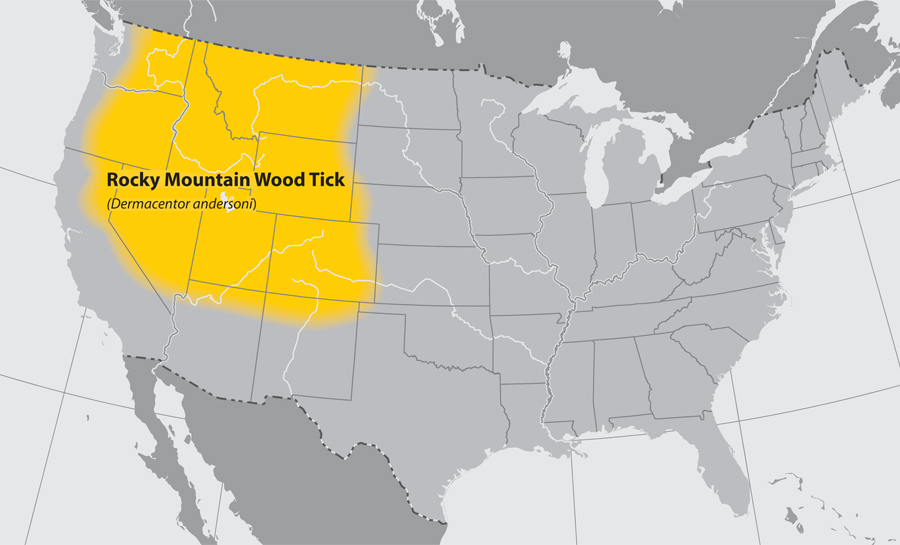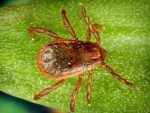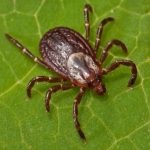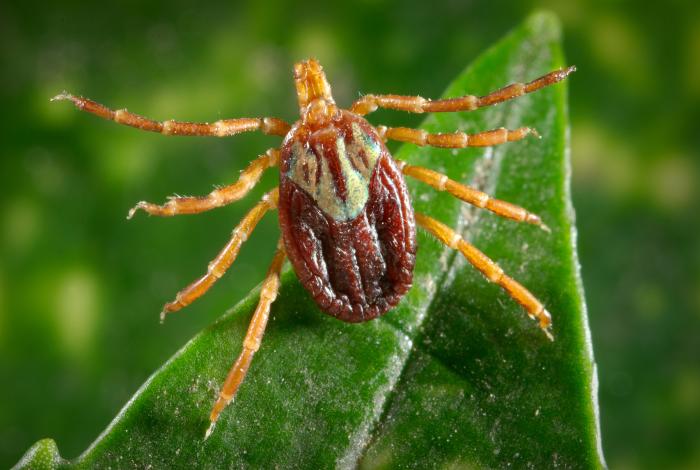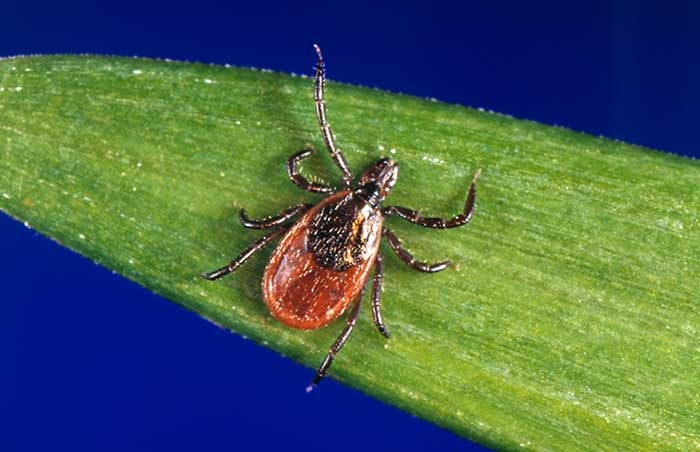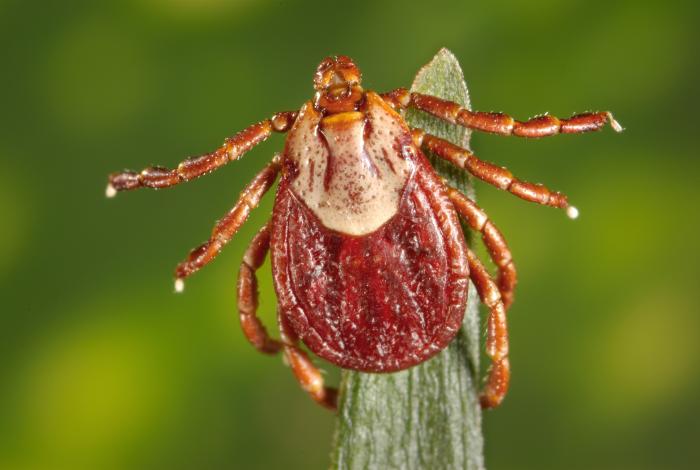
Rocky Mountain wood tick
Rocky Mountain wood tick
Dermacentor andersoni
Distribution
The Rocky Mountain wood tick is known to occur throughout the Rocky Mountain States and southwestern Canada from elevations of 4,000 to 10,500 feet. In the USA, it occurs throughout the West, namely AZ, CA, CO, ID, MT, North Dakota (ND), NE, NM, NV, OR, SD, UT, WA, and WY. In Canada, it occurs in Alberta, British Columbia, and Saskatchewan.
Hosts
Adult ticks feed on large mammals, such as deer, horses, and cattle, in addition to dogs and humans; immatures feed on small mammals, such as shrews, chipmunks, ground squirrels, marmots, jackrabbits, and cottontails. This tick, primarily in its adult stage, are most encountered by humans and companion animals in CO, especially in the western half of the state. They are most active from early spring through June.
Vector Status
The Rocky Mountain wood tick is the primary vector for Colorado Tick Fever Virus. This tick transmits the agents of Rocky Mountain spotted fever and Tularemia in Colorado. It also is the principal cause of tick paralysis in the state and is an experimental vector of Anaplasma ovis Lestoquard and the agents of Q fever and bovine anaplasmosis. One of the earliest isolations of Powassan virus was detected in the Rocky Mountain wood tick (D. andersoni) in Colorado in 1952. Powassan virus has been isolated from populations of this tick in South Dakota.
Resources
H Joel Hutcheson, James W Mertins, Boris C Kondratieff, Monica M White, Ticks and Tick-Borne Diseases of Colorado, Including New State Records for Argas radiatus (Ixodida: Argasidae) and Ixodes brunneus (Ixodida: Ixodidae), Journal of Medical Entomology, tjaa232, https://doi.org/10.1093/jme/tjaa232
Centers for Disease Control and Prevention
Colorado Department of Public Health and Environment webpage and personal communication, with Dr. Leah Colton (former CDPHE, Entomological Epidemiologist).
Rocky Mountain wood tick distribution in Colorado: 2014-2019
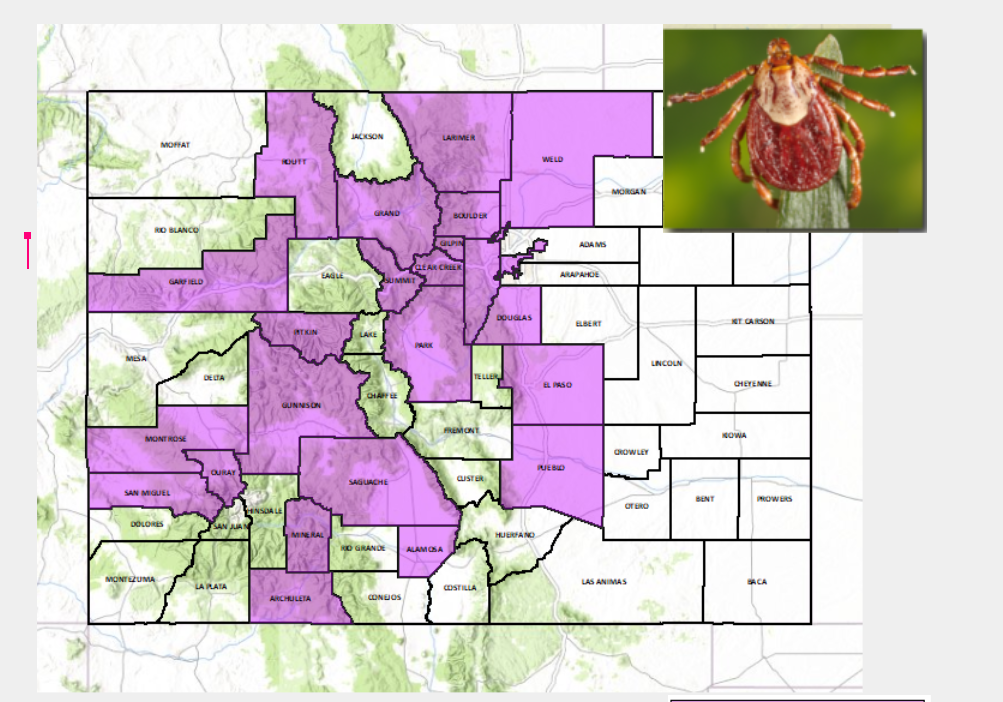
Rocky Mountain wood tick distribution in US: 2019
